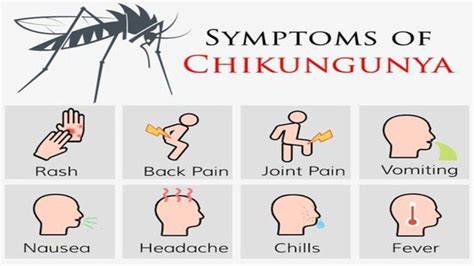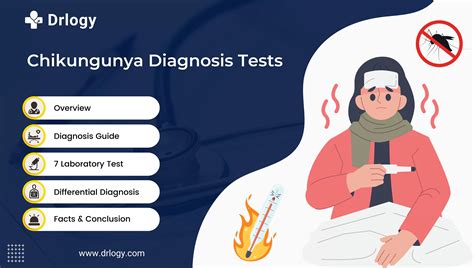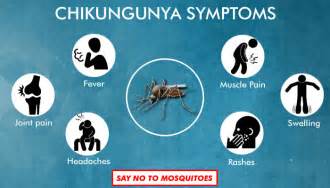Intro
Identify 7 key Chikungunya signs, including joint pain, fever, and rash, to recognize this viral disease, characterized by arthritis, inflammation, and mosquito-borne transmission, and learn its symptoms, diagnosis, and treatment options.
The Chikungunya virus has become a significant concern globally, with outbreaks reported in various parts of the world. This mosquito-borne illness can cause severe symptoms, and it's essential to recognize the signs to seek medical attention promptly. Chikungunya is spread by the Aedes species of mosquitoes, which are also responsible for transmitting other diseases like dengue fever and Zika virus. The virus can lead to debilitating symptoms, and understanding the signs is crucial for early diagnosis and treatment.
Chikungunya is characterized by its sudden onset of symptoms, which can be misleading, as they may resemble those of other viral infections. However, there are distinct signs that can help identify the virus. The disease gets its name from the Makonde language, which means "to become contorted" or "bent," describing the stooped posture that people with the disease often assume due to joint pain. Recognizing the signs of Chikungunya is vital to prevent complications and reduce the risk of transmission.
The impact of Chikungunya on public health is substantial, and it's essential to be aware of the signs to take preventive measures. The virus can cause significant economic burden, especially in areas with limited resources. Moreover, the symptoms can be severe, leading to long-term health consequences if left untreated. By understanding the signs of Chikungunya, individuals can take proactive steps to protect themselves and their communities from the virus.
Introduction to Chikungunya

Common Signs of Chikungunya

Understanding the Symptoms
The symptoms of Chikungunya can be misleading, as they may resemble those of other viral infections. However, there are distinct signs that can help identify the virus. The disease is characterized by its sudden onset of symptoms, which can be severe and debilitating. The joint pain and swelling are typically the most severe symptoms, making it difficult for individuals to perform daily activities.Severe Signs of Chikungunya

Risk Factors
Certain individuals are at a higher risk of developing severe symptoms, including: * Older adults * Young children * People with underlying medical conditions * Pregnant women These individuals should take extra precautions to prevent the disease and seek medical attention promptly if they experience any symptoms.Diagnosing Chikungunya

Treatment and Prevention
There is no specific treatment for Chikungunya, but symptoms can be managed with: * Rest * Fluid intake * Pain relievers * Anti-inflammatory medications Prevention is key to reducing the risk of transmission. Individuals can take the following precautions: * Use insect repellents * Wear protective clothing * Avoid areas with high mosquito activity * Eliminate standing water around homes to prevent mosquito breedingComplications of Chikungunya

Global Impact
The global impact of Chikungunya is significant, with outbreaks reported in various parts of the world. The disease can cause significant economic burden, especially in areas with limited resources. Moreover, the symptoms can be severe, leading to long-term health consequences if left untreated.Future Directions

Conclusion and Next Steps
In conclusion, recognizing the signs of Chikungunya is essential to prevent complications and reduce the risk of transmission. By understanding the symptoms, diagnosis, treatment, and prevention of the disease, individuals can take proactive steps to protect themselves and their communities. It's crucial to continue researching and developing effective treatments and vaccines to combat this debilitating disease.What are the common signs of Chikungunya?
+The common signs of Chikungunya include sudden onset of fever, joint pain and swelling, muscle pain, headache, rash, and fatigue.
How is Chikungunya diagnosed?
+Diagnosing Chikungunya can be challenging, but a combination of physical examination, medical history, and laboratory tests can help confirm the diagnosis.
What are the complications of Chikungunya?
+Chikungunya can cause several complications, including long-term joint pain and swelling, muscle weakness, neurological symptoms, eye problems, and heart problems.
How can Chikungunya be prevented?
+Prevention is key to reducing the risk of transmission. Individuals can take precautions such as using insect repellents, wearing protective clothing, avoiding areas with high mosquito activity, and eliminating standing water around homes to prevent mosquito breeding.
Is there a treatment for Chikungunya?
+There is no specific treatment for Chikungunya, but symptoms can be managed with rest, fluid intake, pain relievers, and anti-inflammatory medications.
We hope this article has provided you with a comprehensive understanding of Chikungunya and its signs. If you have any further questions or concerns, please don't hesitate to comment below. Share this article with your friends and family to raise awareness about this debilitating disease. Together, we can work towards preventing the spread of Chikungunya and improving public health.
